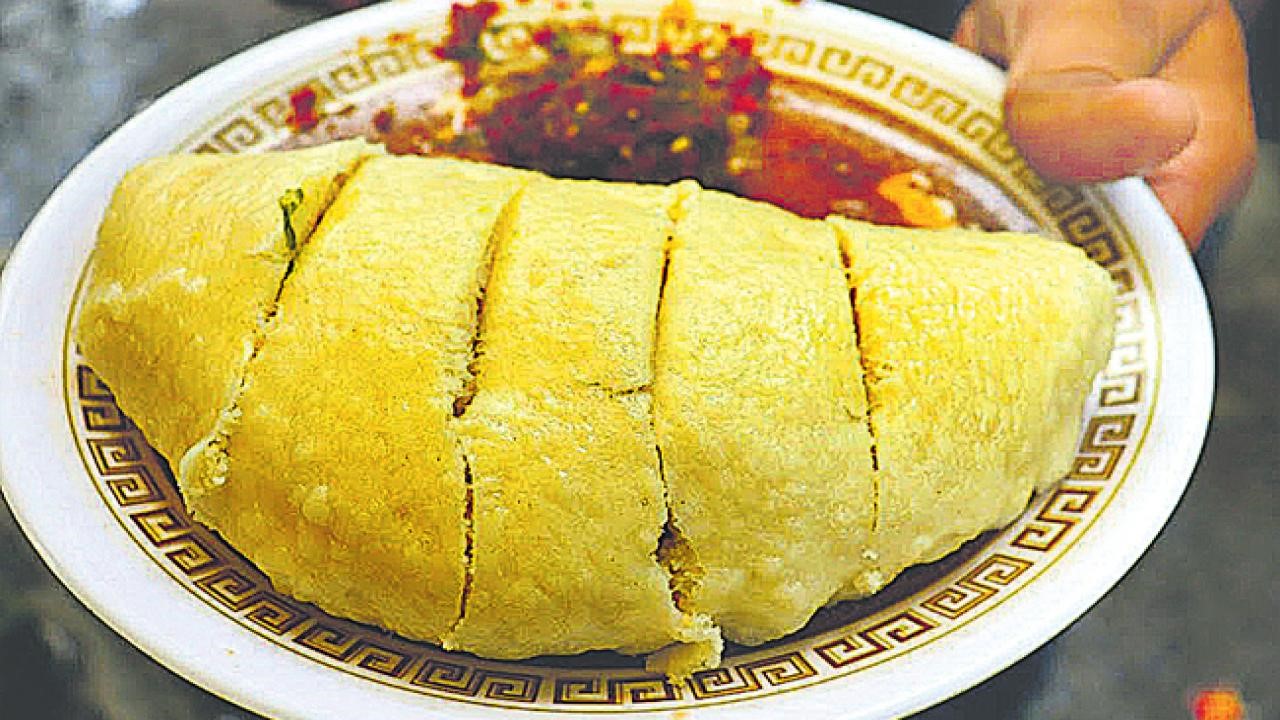
Himachal Pradesh, a state situated in the northern part of India, is renowned not only for its picturesque landscapes and awe-inspiring natural beauty but also for its abundant culinary legacy. Siddu, a native bread originating from this mountainous region, is a highly esteemed and distinctive culinary delicacy that has been savoured for countless centuries. The 'Kullvi Dish' is considered one of the finest examples of regional cuisine in the Kullu region.
Siddu's origins can be attributed to the culturally diverse heritage of Himachal Pradesh. This region boasts a rich history deeply rooted in tradition, and its culinary legacy serves as evidence of the longstanding habits and practices that have been transmitted across centuries. The word "Siddu" is thought to derive from the indigenous dialects of Himachal Pradesh. According to certain interpretations, its origin can be traced back to the Tibetan term "Tse-doe," which translates to 'steamed bread.' This language connection suggests the cultural and historical interactions between Tibet and Himachal Pradesh throughout the millennia. The local culinary customs were undoubtedly affected by these contacts, which ultimately led to the formation of Siddu.
Similar to most customary culinary preparations, Siddu is accompanied by a variety of stories and folklore. Although without empirical evidence, these anecdotes contribute to the allure and enigma surrounding this Himachali bread. A prevalent misconception is that Siddu was highly favoured by the indigenous gods. According to tradition, the bread was presented to the deities as a component of religious ceremonies and celebrations. It was believed that ingesting Siddu would elicit the blessings of the deities upon the society, leading to successful harvests and prosperity. The Chamunda Devi Temple, situated in Dharamshala, is a renowned temple where Siddu, a local delicacy, is offered to the goddess Maa Chamunda. The contribution frequently constitutes an integral component of the indigenous customs and ceremonies linked to this shrine. The Himachali people possess a profound spiritual bond with their land and the deities of the Himalayas. Although there may not be empirical evidence to substantiate this assertion, it emphasizes the profound connections between the individuals, their culinary practices, and their convictions.
The origins and preparation techniques of Siddu can be attributed to the Gaddi population, who are one of the indigenous groups of Himachal Pradesh. Traditionally, it is prepared by combining wheat flour, yeast, and occasionally baking soda. The dough is combined with milk, ghee (clarified butter), and sugar, resulting in a mildly sweet taste. Subsequently, the dough is set aside for fermentation, facilitating its leavening, prior to undergoing the steaming process. An exceptional characteristic of Siddu is the utilization of a filling, distinguishing it from other types of bread. The predominant filling typically comprises of materials such as poppy seeds, sesame seeds, jaggery, and a variety of local spices. These fillings enhance the bread by introducing a variety of flavours and textures. It is always recommended to consume it while it is still hot.
Several recipes and booklets authored by local individuals and enthusiasts in Himachal Pradesh provide comprehensive information about Siddu. These sources offer recipes, ingredient lists, and detailed directions on how to create Siddu. Some examples of these books include "Himachali Rasoi" written by Sushma Madaan and "Flavours of Himachal" authored by Minakshi Chaudhary. The cultural value of foods such as Siddu has been acknowledged by the government of Himachal Pradesh, which actively promotes them as integral components of the state's culinary legacy. Information regarding traditional Himachali cuisine, including the dish Siddu, may often be found on official tourism websites, booklets, and publications issued by government authorities.
Siddu, a traditional bread from Himachal Pradesh, is a gastronomic pleasure that has strong historical and cultural ties to the region. Although there may be a dearth of tangible proof regarding its beginnings, the stories, facts, traditional beliefs, and references surrounding Siddu clearly demonstrate its significant role in the state's heritage. Himachal Pradesh's commitment to preserving its traditions is exemplified by Siddu, who serves as a representation of the diverse and valuable cultural heritage that distinguishes this region. This is more than simply bread; it is a symbol of the deep emotional connection and cultural heritage of Himachal Pradesh. Passed down through generations, it is revered and treasured by the local community.





